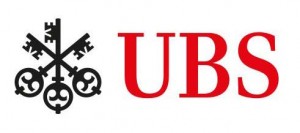While it might not have the headline-grabbing appeal of bitcoin’s recent price surge, a new Ethereum-powered bank-to-bank data-checking platform may just be the start of a major innovation in blockchain technology. Swiss financial services giant UBS recently announced the project, known as Madrec (Massive Autonomous Distributed Reconciliation platform), which aims to streamline data verification processes between banks and other financial institutions.
 The platform’s announcement comes in advance of new E.U. banking rules, known as Markets in Financial Instruments Directive (MiFID) II, which seek to create more transparent financial markets. The new rules take effect on Jan. 3, 2018, and require all financial institutions to use a unique-20 digit “Legal Entity Identifier (LEI)” code to verify their transactions. With thousands of companies needing to verify LEIs and other shared data for every transaction, financial firms are now racing to create efficient, inexpensive, and fully automated verification platforms. It’s no surprise that UBS’s technical teams soon turned their gaze towards the Ethereum blockchain for a solution, as it already has smart contract and consensus validation built in.
The platform’s announcement comes in advance of new E.U. banking rules, known as Markets in Financial Instruments Directive (MiFID) II, which seek to create more transparent financial markets. The new rules take effect on Jan. 3, 2018, and require all financial institutions to use a unique-20 digit “Legal Entity Identifier (LEI)” code to verify their transactions. With thousands of companies needing to verify LEIs and other shared data for every transaction, financial firms are now racing to create efficient, inexpensive, and fully automated verification platforms. It’s no surprise that UBS’s technical teams soon turned their gaze towards the Ethereum blockchain for a solution, as it already has smart contract and consensus validation built in.
Although not a cryptocurrency use case, the Madrec platform uses a modified version of the Ethereum blockchain to anonymously verify information from participating companies. Private details are kept within their institutions, with only the hashed versions being broadcast and verified by the network. This allows companies to check financial information in real time, all while keeping the source data safe. Madrec was developed by UBS in partnership with other heavy hitters in the finance world, including Barclays, Credit Suisse, KBC, SIX and Thomson Reuters. As a project built upon public reference data, UBS is presenting Madrec as a largely open, non-competitive platform.
Peter Stephens, UBS’s head of blockchain research and development efforts, recently told Coindesk: “It’s public reference data, it’s not a competitive differentiator. It’s a sort of a ‘do no harm, make the world a better place’ thing. It does good for the regulators, we’re including the data providers as well, we’re not trying to disrupt them, and we’re including other banks.”
UBS has been actively engaged in developing blockchain-based banking technology since at least 2014, and has many cryptocurrency-related projects in works at their London-based technology hub, Level39. Last year, UBS unveiled their version of a bank-to-bank cryptocurrency — the Utility Settlement Coin (USC) — which was also developed at Level39.
Will Madrec’s blockchain-backed approach prove to be more efficient and cost-effective than the more traditional database systems being developed by other European banks? Participating institutions will find out for themselves during the LEI’s live-data pilot program, which concludes at the end of January.













